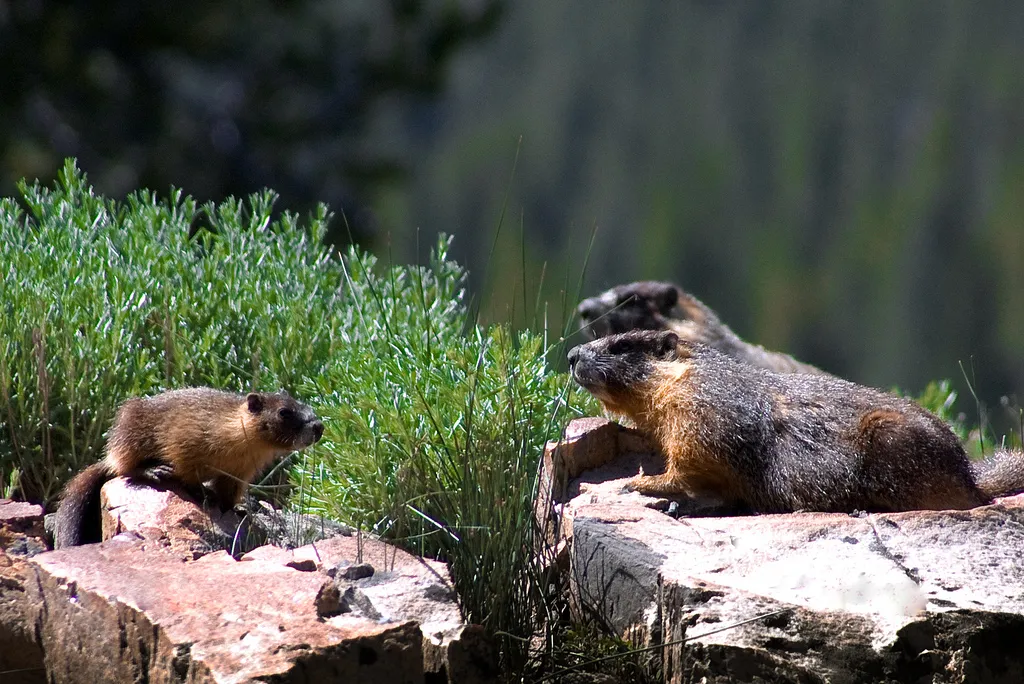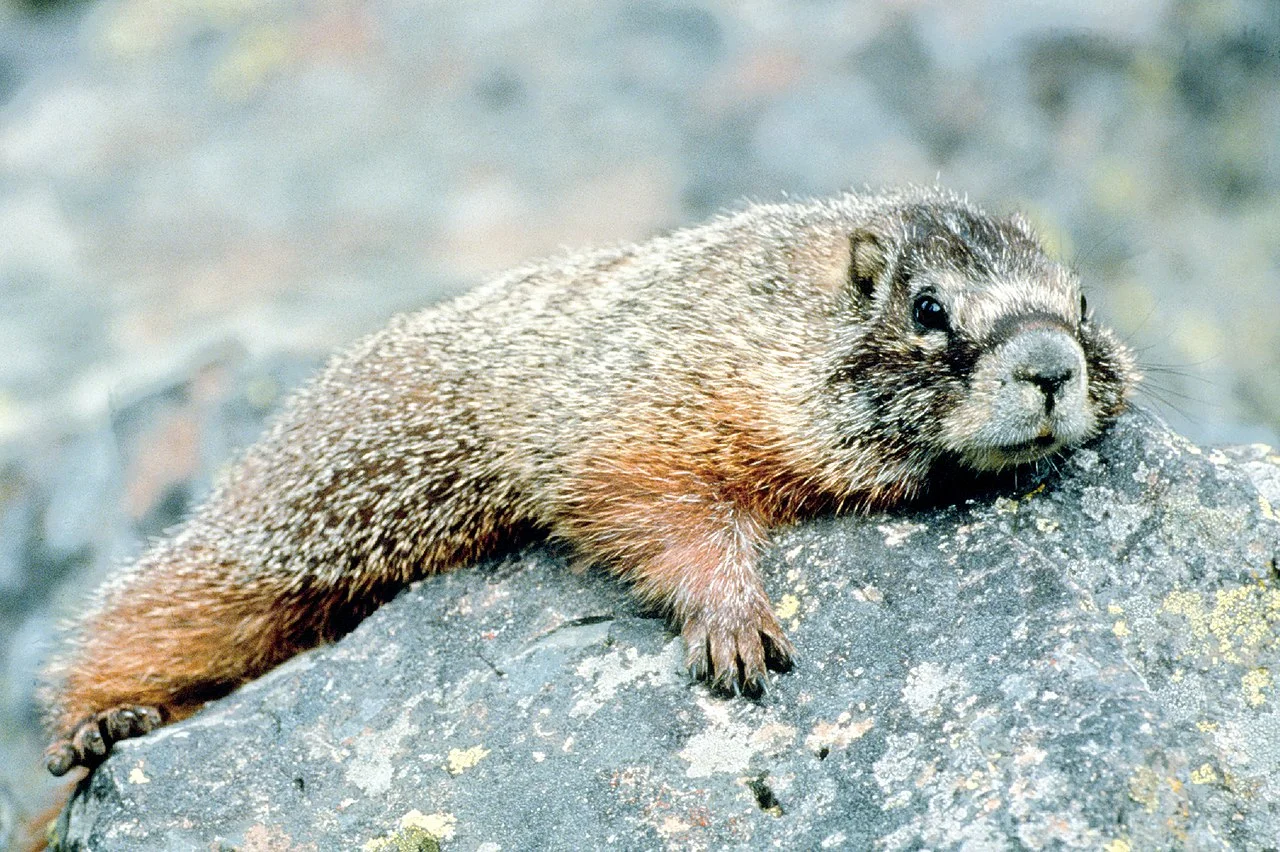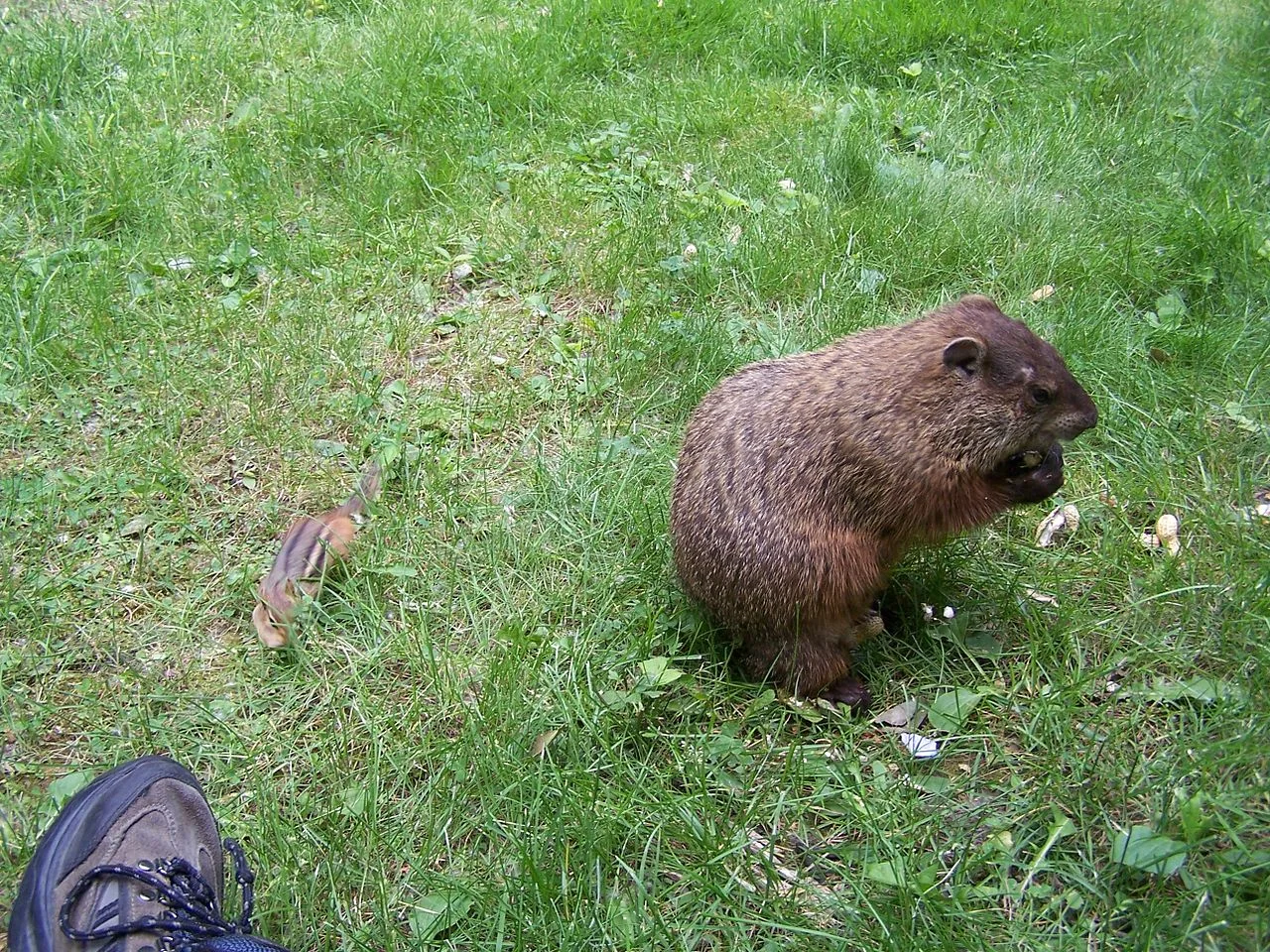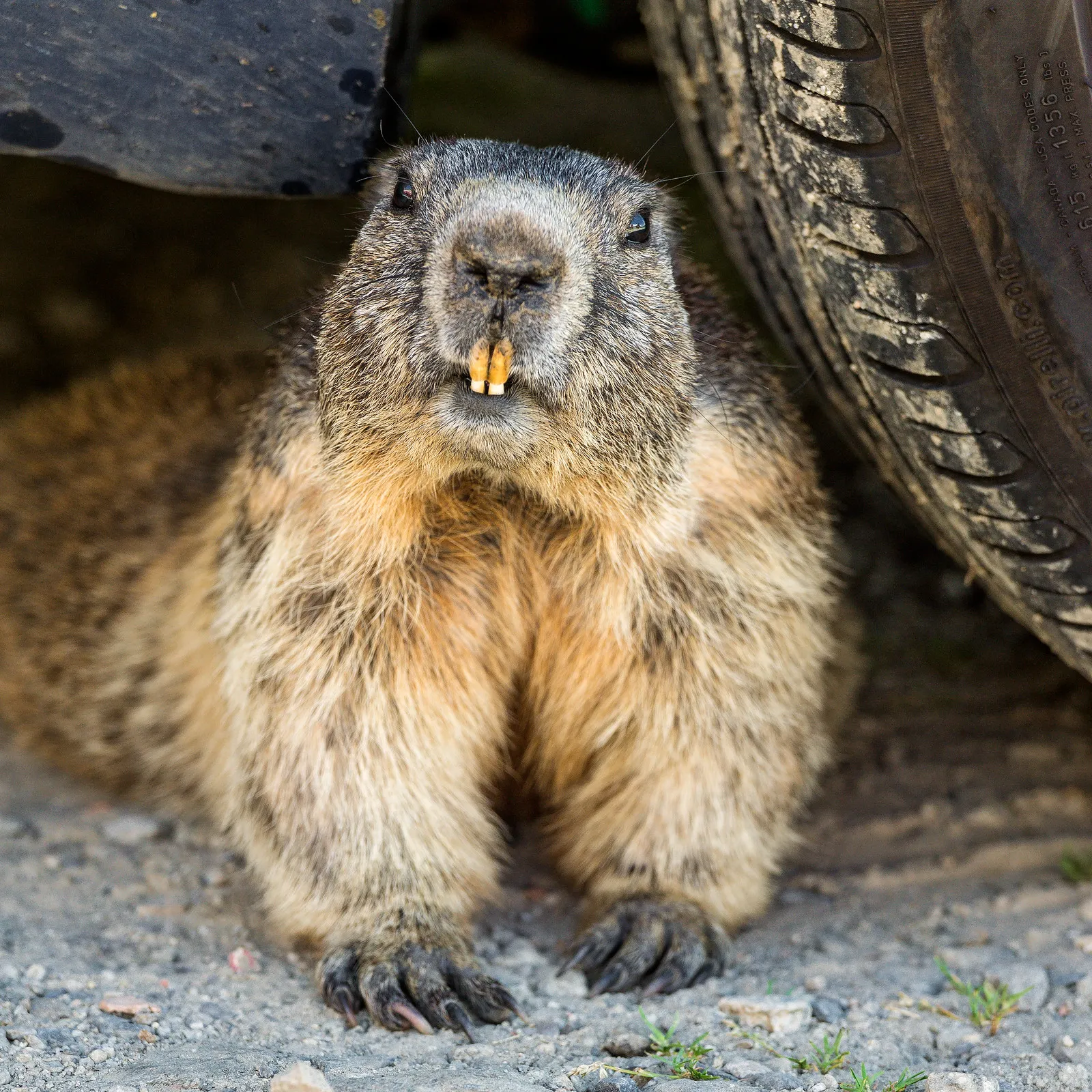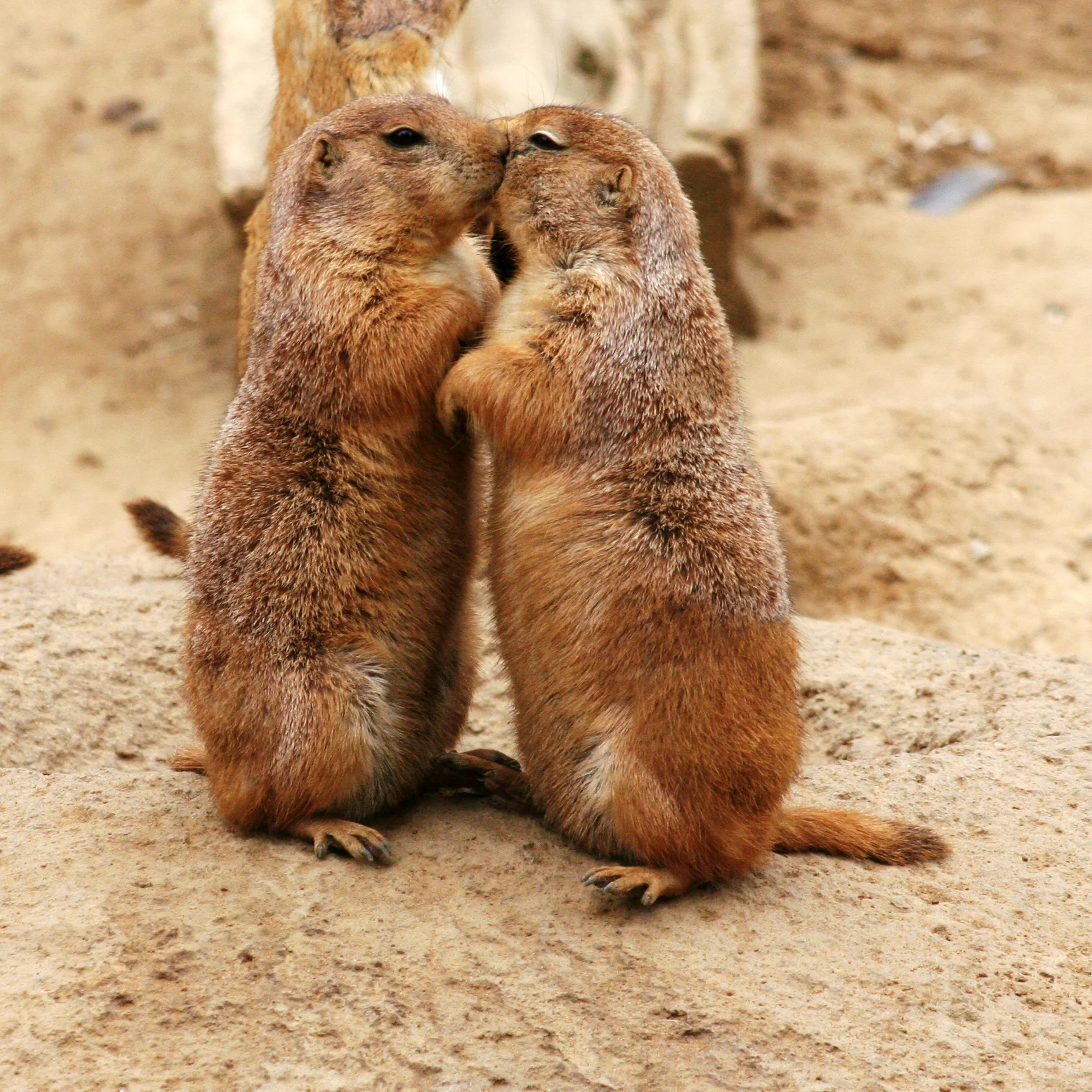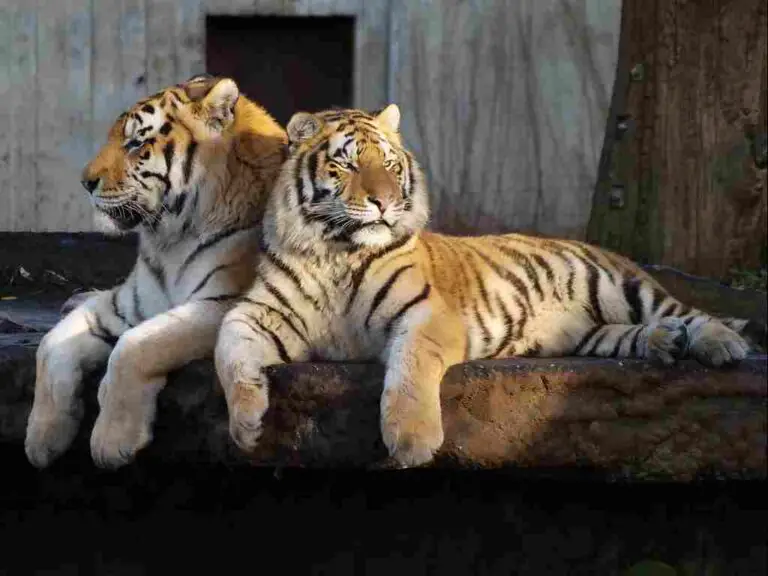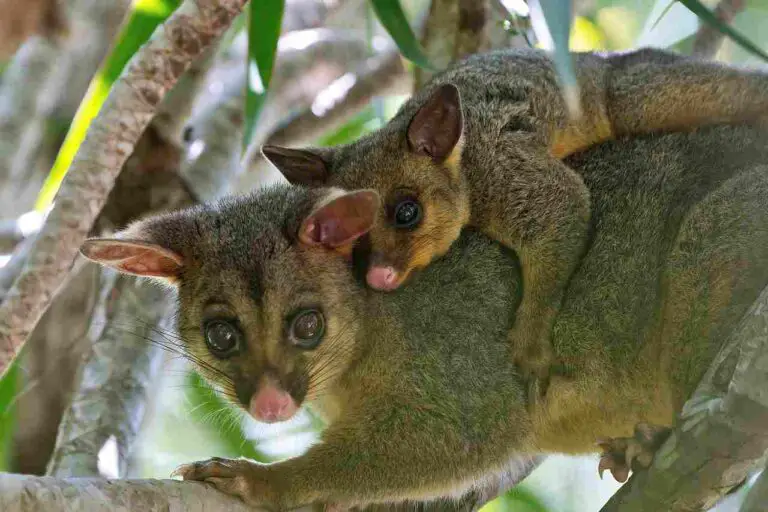Groundhog Vs Marmot Size, Weight, Overall Comparison
A groundhog is a type of marmot with distinctive attributes. Exploring the distinctions between groundhogs and marmots reveals subtle differences in size, appearance, and geographic distribution. While both belong to the same genus, their varying characteristics allow for differentiation between the two rodent types.
I. Weight and Size:
– Groundhogs typically weigh up to 13 pounds and measure around 18 to 24 inches long, making them larger and stockier than marmots. In contrast, yellow-bellied marmots weigh 8 pounds or less and share a similar size range with groundhogs.
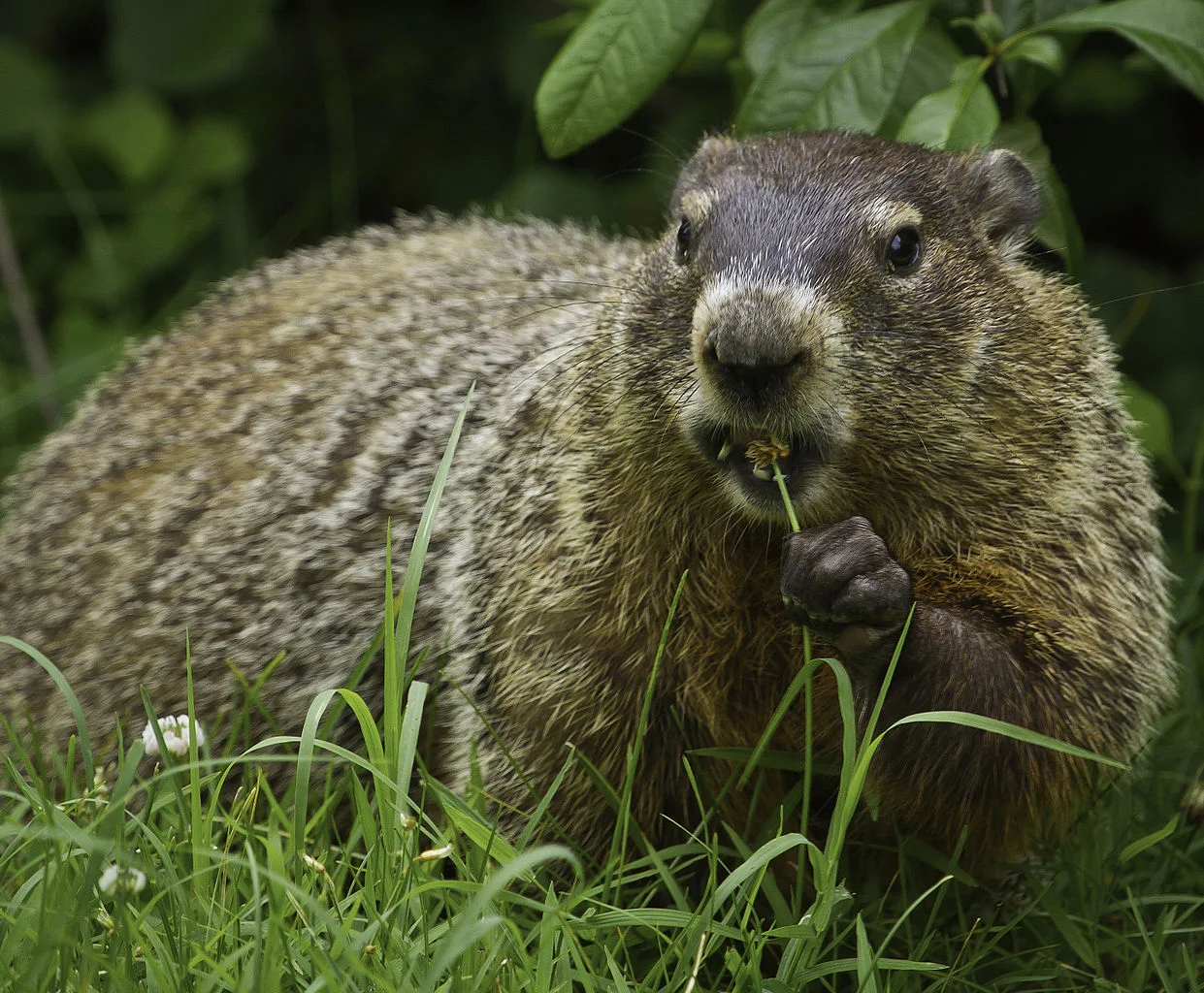
II. Coloration and Appearance:
– Groundhogs are generally less colorful than marmots, with subtle variations in fur hues. Marmots, on the other hand, may exhibit a more vibrant coloration and distinct markings, contributing to their visual differentiation from groundhogs.
III. Geographic Distribution:
– Groundhogs and marmots tend to inhabit different regions, with groundhogs prevalent in certain areas of North America and marmots commonly found in other parts of the continent. Location serves as a reliable indicator for distinguishing between these two rodent species.
IV. Taxonomic Classification:
– Classified as marmots, groundhogs are members of the squirrel family (Sciuridae) within the order Rodentia. While they share taxonomic classification, their distinct physical traits allow for differentiation between groundhogs and other marmot species.
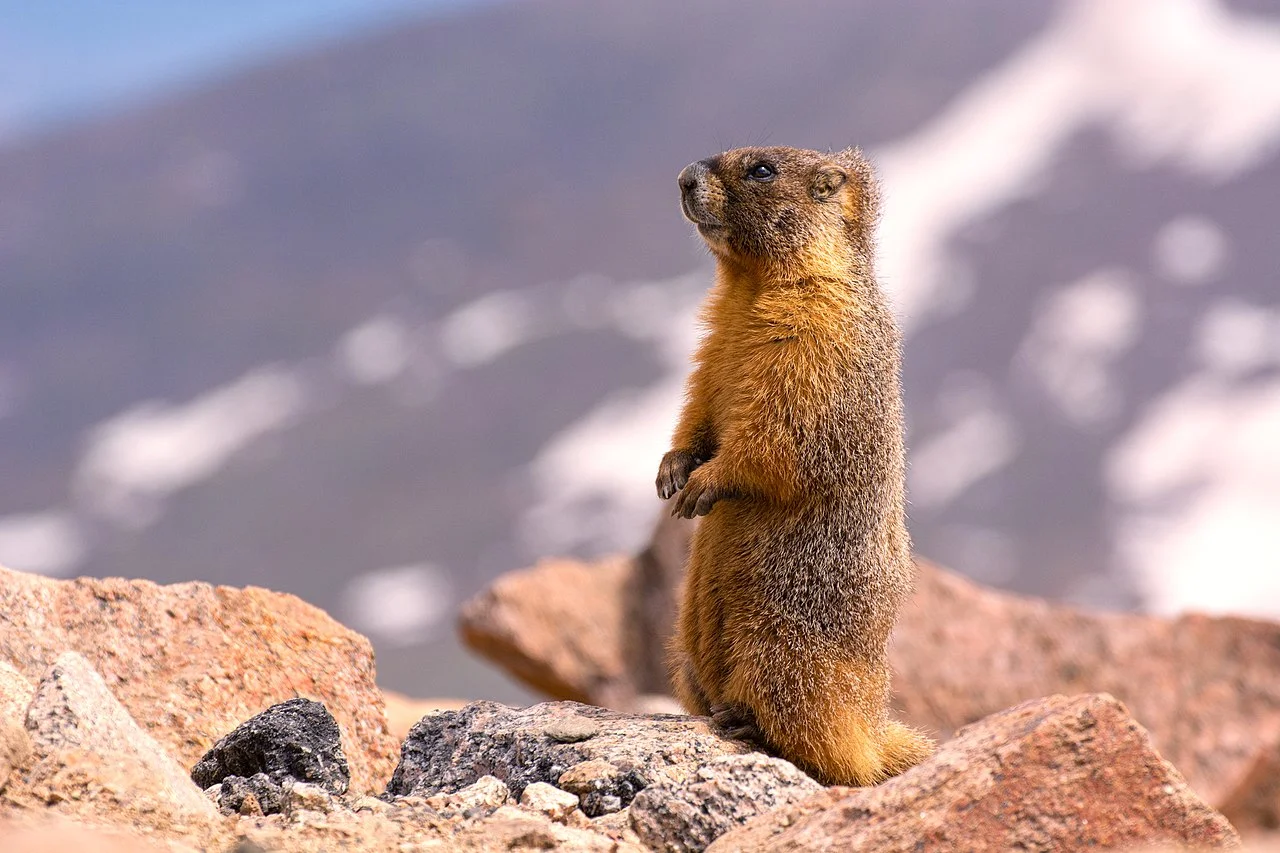
V. Tail Characteristics:
– Marmots may have bushier tails compared to groundhogs, contributing to their visual distinction. The differences in tail appearance serve as one of the key features for discerning between these two rodent types.
VI. Social Behavior:
– Groundhogs are considered more solitary compared to other marmot species, exhibiting varying social behaviors across populations. This difference in social behavior may influence their habitat preferences and interaction patterns.
*Details of Comparison
| Criteria | Groundhog | Marmot |
| Taxonomy | M. monax (Sciuridae) |
Genus Marmota (multiple species within Sciuridae)
|
| Appearance | Stout build, bushy tail, fur color variation |
Stout build, bushy tail, fur color variation
|
| Size (inches) | 16-26 |
16-32 (species-dependent)
|
| Weight (pounds) | 4-9 |
4-11 (species-dependent)
|
| Dentition | Herbivorous with sharp incisors |
Herbivorous with sharp incisors
|
| Offensive Advantages | Sharp claws and incisors for digging and foraging |
Sharp claws and incisors for digging and foraging
|
| Defensive Advantages | Rely on burrows, tree climbing for groundhogs |
Rely on burrows for protection
|
| Speed (mph) | 8-10 | 8-10 |
| Agility | Moderate agility, potential climbing for marmots |
Moderate agility, climbing for both
|
| Senses | Reliance on smell and hearing, variable eyesight |
Reliance on smell and hearing, variable eyesight
|
| Physical Capacity | Strong digging and climbing capabilities |
Strong digging and climbing capabilities
|
| Habitat Preference | Open areas, meadows, agricultural for groundhogs |
Diverse habitats globally
|
| Tracks | Distinctive with claw marks |
Distinctive with claw marks
|
| Lifespan (years) | 2-5 |
5-15 (species-dependent)
|
| Mode of Feeding | Herbivorous, consuming grasses and vegetation |
Herbivorous, consuming grasses and vegetation
|
| Intelligence | Moderate intelligence, adaptability |
Moderate intelligence, adaptability
|
| Social Behavior | Generally solitary, variable social structures for marmots |
Variable social structures, some solitary
|
| Reproduction | Polygynous, breeding season in spring |
Variable reproductive strategies among species
|
| Parental Behavior | Limited parental care, variable care for marmots |
Limited parental care, variable care for marmots
|
| Proximity to Humans | Found near human settlements, suburban areas |
Varied, some in proximity to human activities
|
| Behavior Toward Humans | Generally wary, may become accustomed |
Responses vary, caution advised
|
| Danger Posed to Humans | Minimal danger, potential bites if provoked |
Minimal danger, potential bites if provoked
|
| Precautions | Caution to avoid provoking or cornering |
Caution to avoid provoking or cornering
|
| Conservation Status | Generally stable | Varied, some face conservation concerns |
Key Points
- Both groundhogs and marmots share similarities in appearance, dentition, offensive and defensive advantages, speed, agility, senses, physical capacity, mode of feeding, intelligence, and lifespan.
- Differences include size, weight, habitat preferences, tracks, social behavior, proximity to humans, behavior toward humans, and conservation status.
- Groundhogs commonly inhabit open areas and suburban regions, while marmots display a broader habitat range globally, with some species living in alpine environments.
- Both rodents exhibit caution or tolerance toward humans, and their minimal danger to humans necessitates precautions to avoid provoking bites.
- Conservation statuses vary, with groundhogs generally stable and marmots facing species-specific concerns.
1. Taxonomy:
Groundhog (Marmota monax):
Kingdom: Animalia
Phylum: Chordata
Class: Mammalia
Order: Rodentia
Family: Sciuridae
Genus: Marmota
Species: M. monax
Marmot (Genus Marmota, various species):
Kingdom: Animalia
Phylum: Chordata
Class: Mammalia
Order: Rodentia
Family: Sciuridae
Genus: Marmota (multiple species falling under this genus)
2. Appearance:
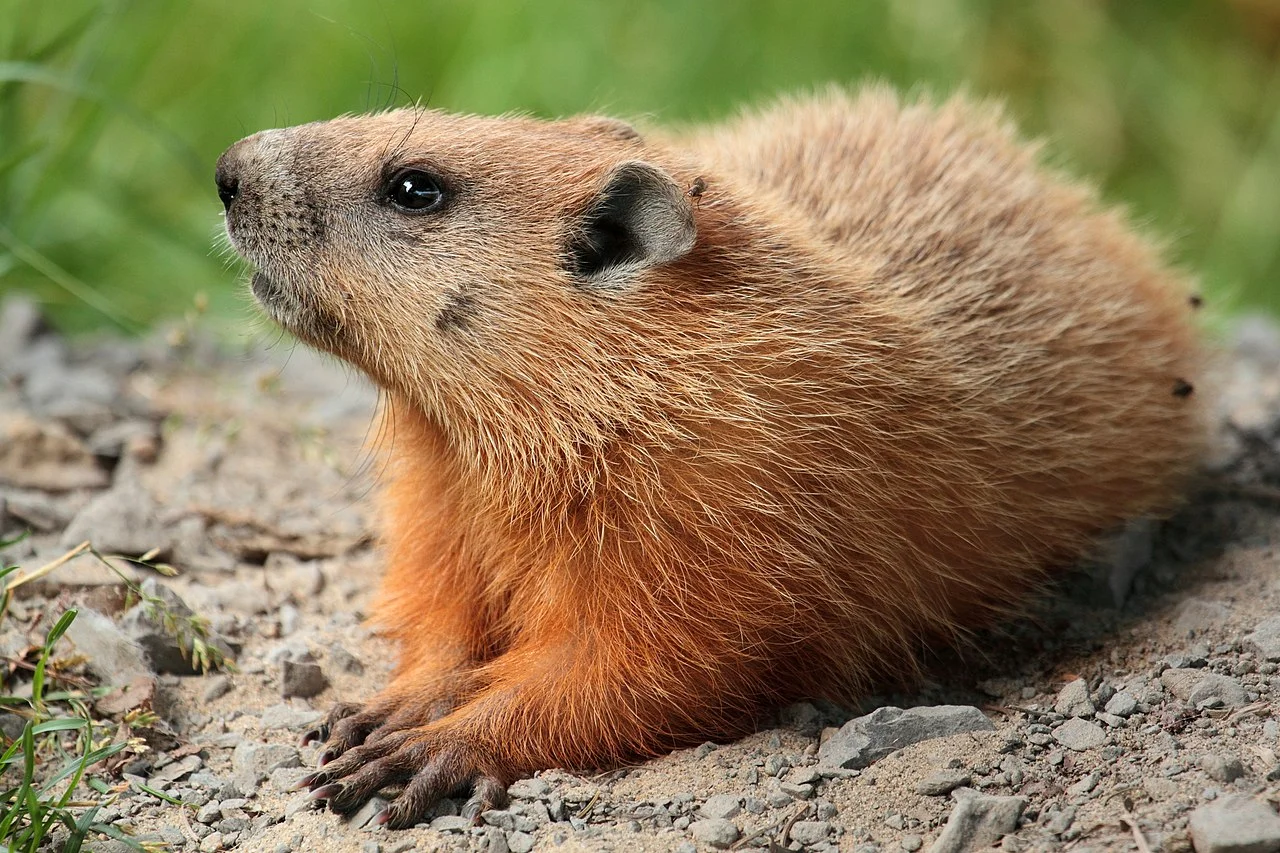
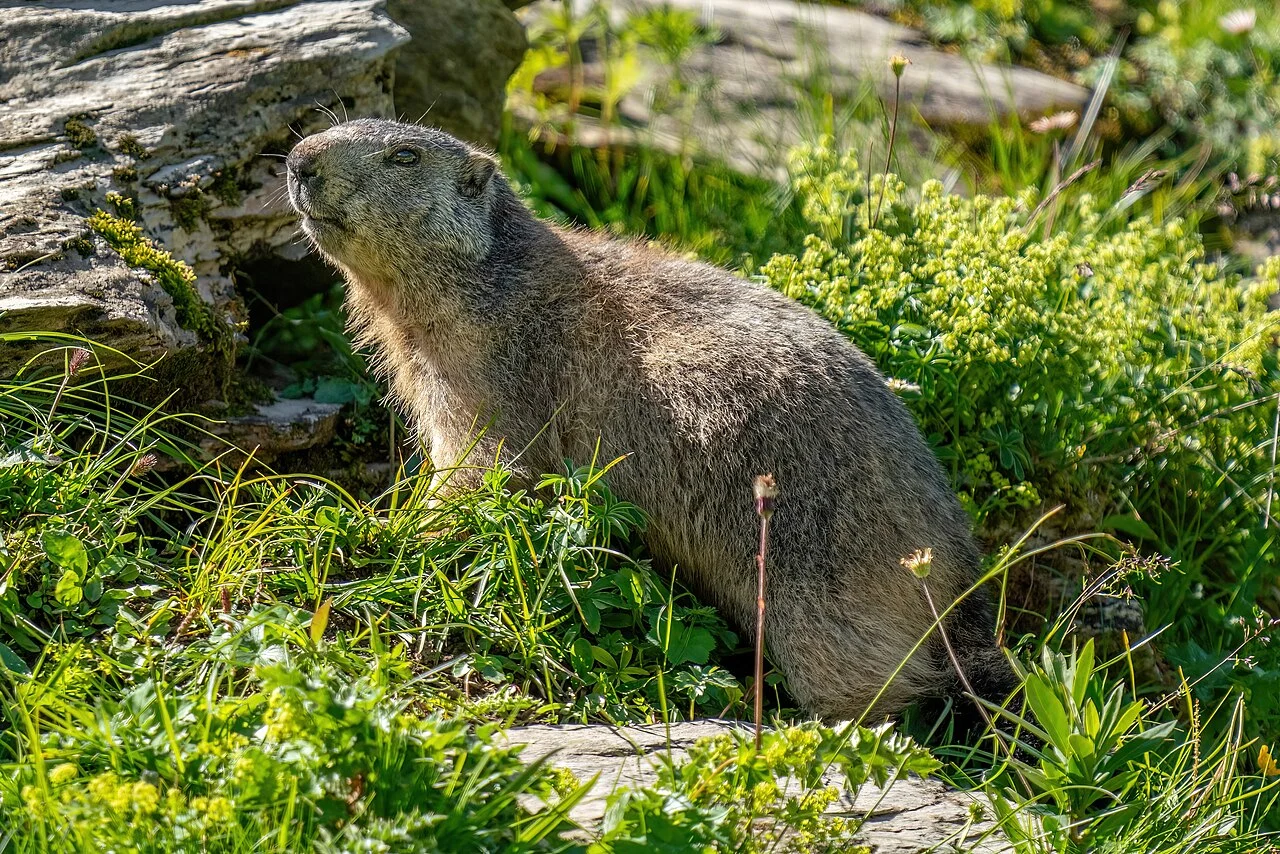
Groundhog:
Rounded body with short legs, covered in brown fur.
Prominent, short, bushy tail.
Characterized by a stout build and a short, broad head.
Marmot:
Varied appearances based on species, generally stout with a similar body structure to groundhogs.
Fur color can range from brown to gray, depending on the specific marmot species.
Display a bushy tail, similar to groundhogs.
Comparison:
Both groundhogs and marmots share a stout build and bushy tail, but specific fur coloration and body nuances can vary.
Ecological Implications:
Camouflage and appearance adaptations aid in predator avoidance and thermoregulation in their respective habitats.
3. Size:
Groundhog:
Typically around 16 to 26 inches (40 to 66 cm) in length.
Marmot:
Size varies among marmot species, ranging from 16 to 32 inches (40 to 81 cm).
Comparison:
Similar size range, but marmots can be slightly larger depending on the specific species.
Ecological Implications:
Size influences ecological niche and resource requirements, impacting competition with other species.
4. Weight:
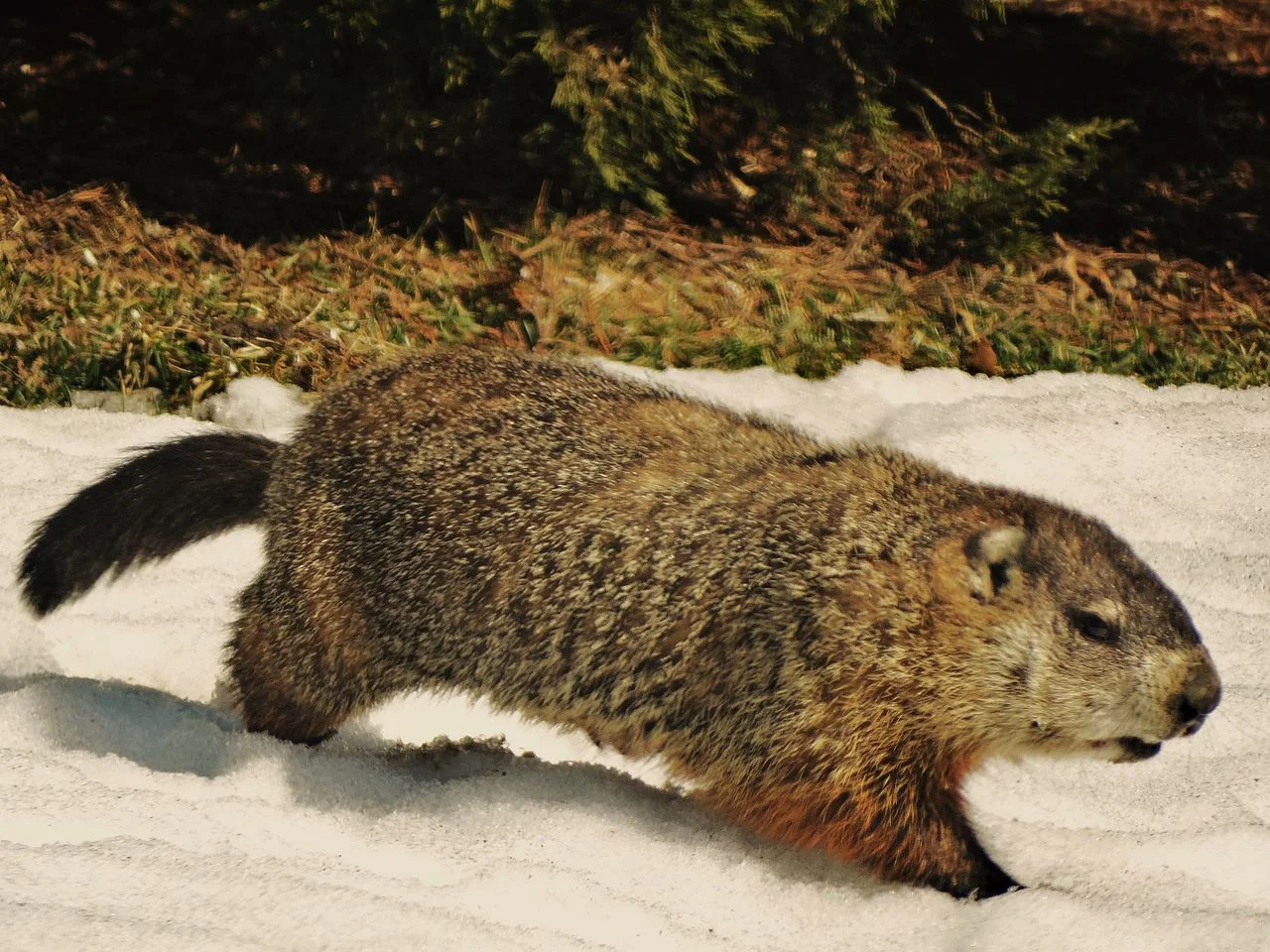
Groundhog:
Average weight ranges from 4 to 9 pounds (1.8 to 4 kg).
Marmot:
Weight varies by species, generally falling within the range of 4 to 11 pounds (1.8 to 5 kg).
Comparison:
Marmots can be slightly heavier, but both groundhogs and marmots exhibit a similar weight range.
Ecological Implications:
Weight influences foraging patterns, hibernation strategies, and overall energy requirements within their ecosystems.
5. Dentition:
Groundhog:
Herbivorous, with sharp incisors for cutting vegetation.
Marmot:
Herbivorous, possessing sharp incisors adapted for gnawing on plant material.
Comparison:
Both groundhogs and marmots exhibit herbivorous dentition, crucial for their primary diet of plants.
Ecological Implications:
Dentition adaptation reflects their ecological role as herbivores, influencing plant communities and vegetation dynamics in their habitats.
6. Physical Offensive Advantages:
Groundhog:
Sharp claws and incisors used for digging burrows and foraging.
Marmot:
Similar sharp claws and incisors for burrow construction and accessing food resources.
Comparison:
Both groundhogs and marmots possess offensive advantages for digging and securing food.
Ecological Implications:
Burrow construction contributes to soil aeration and can influence vegetation structure in their habitats.
7. Physical Defensive Advantages:
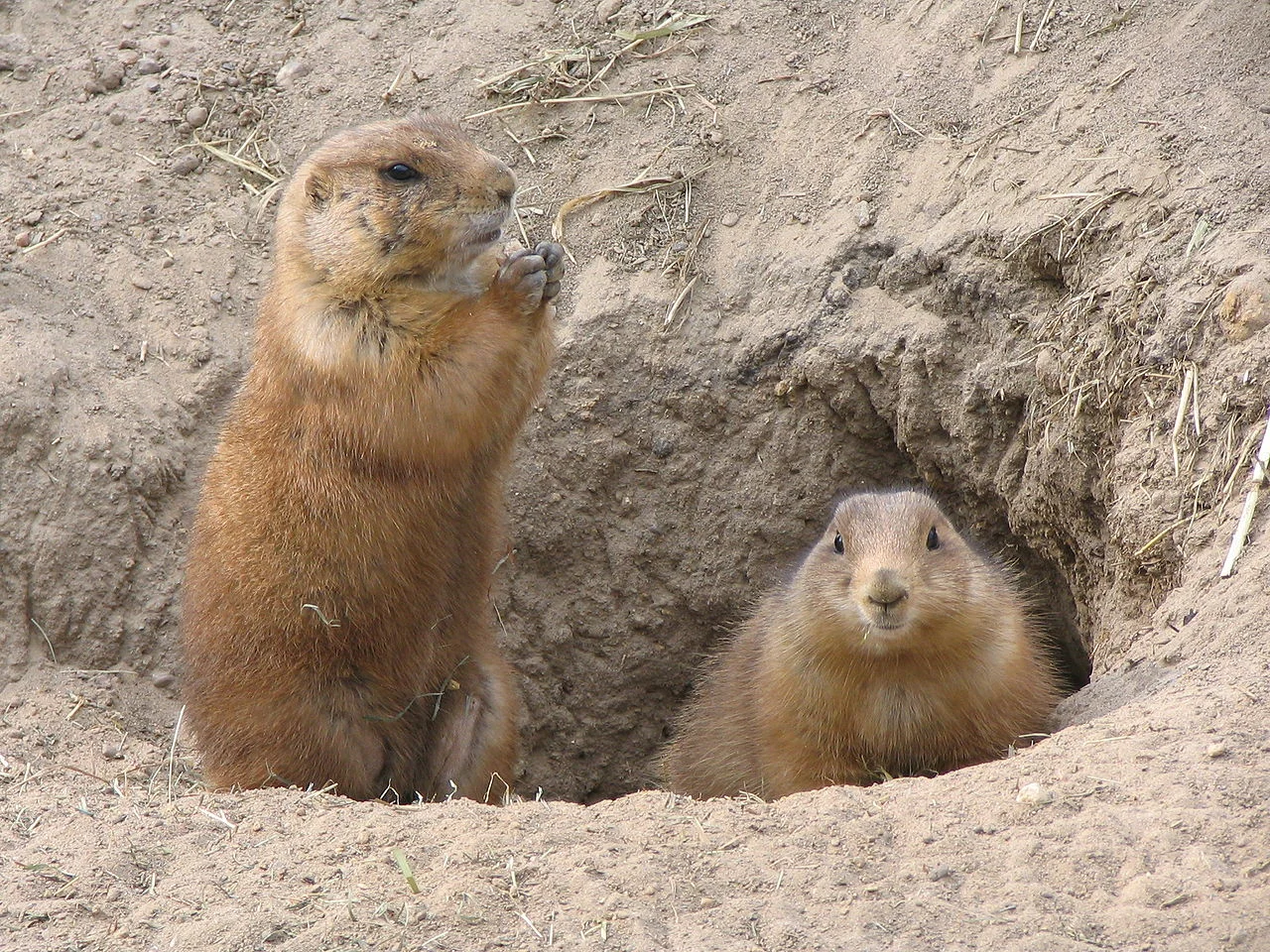
Groundhog:
Quick retreat into burrows as a primary defense mechanism.
Alertness and ability to climb trees or structures for safety.
Marmot:
Rapid retreat into burrows when threatened.
Vigilance and a keen sense of hearing for early detection of predators.
Comparison:
Both species rely on burrows for protection, showcasing a shared defensive strategy.
Ecological Implications:
Burrows serve as crucial shelters not only for the rodents themselves but also for other species that may cohabitate or utilize abandoned burrows.
8. Speed (Km/hour or Mile/hour):
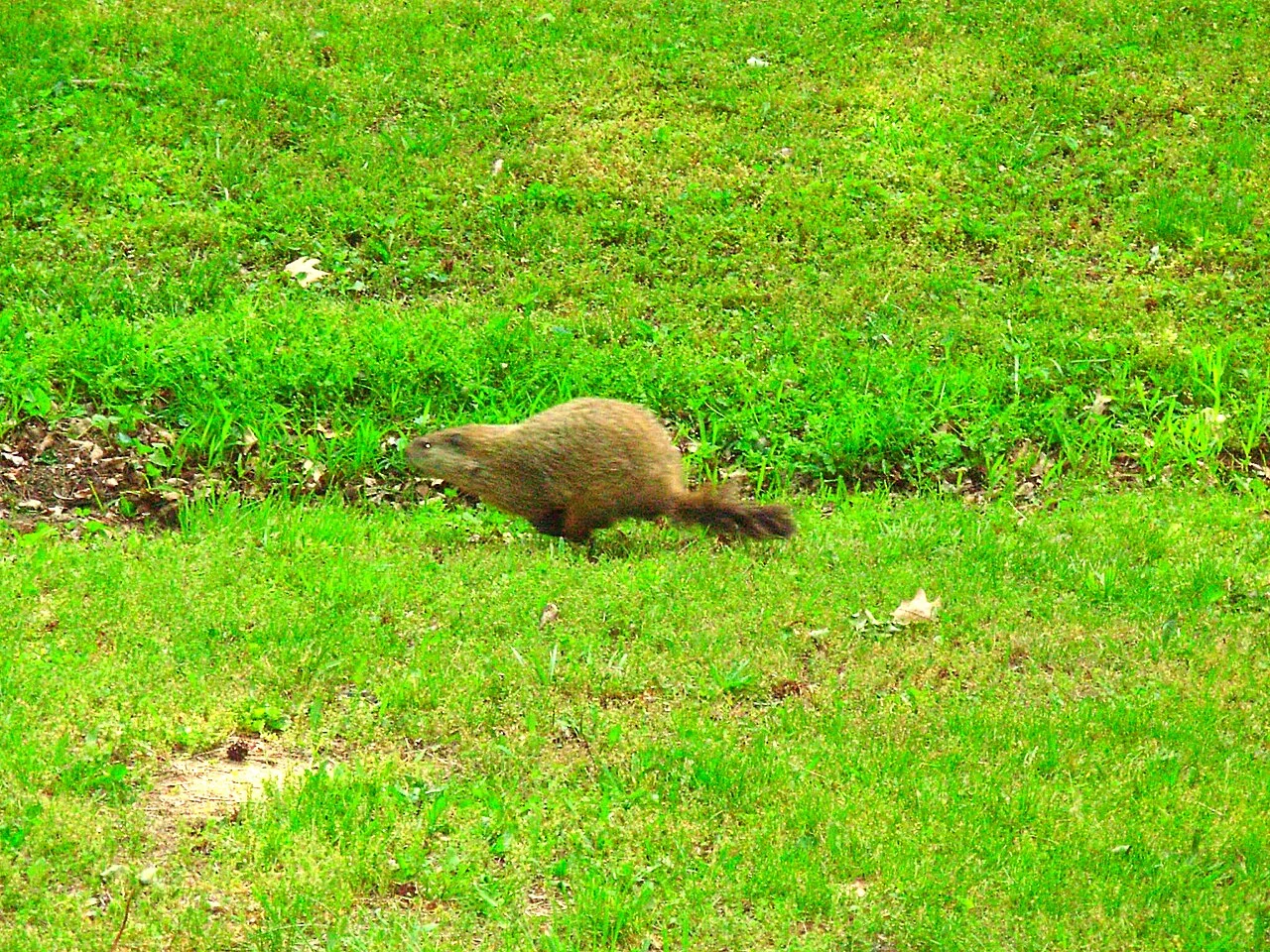
Groundhog:
Limited running speed, estimated around 8 to 10 miles per hour.
Marmot:
Similar running speed, approximately 8 to 10 miles per hour.
Comparison:
Groundhogs and marmots exhibit comparable running speeds.
Ecological Implications:
Moderate running speed aids in escaping predators and finding food resources, influencing predator-prey dynamics.
9. Agility:
Groundhog:
Moderately agile, capable of navigating rough terrain.
Marmot:
Agile climbers and adept at moving through rocky landscapes.
Comparison:
While both species display agility, marmots may showcase enhanced climbing abilities.
Ecological Implications:
Agility facilitates movement within their habitats, impacting access to resources and escape from predators.
10. Senses:
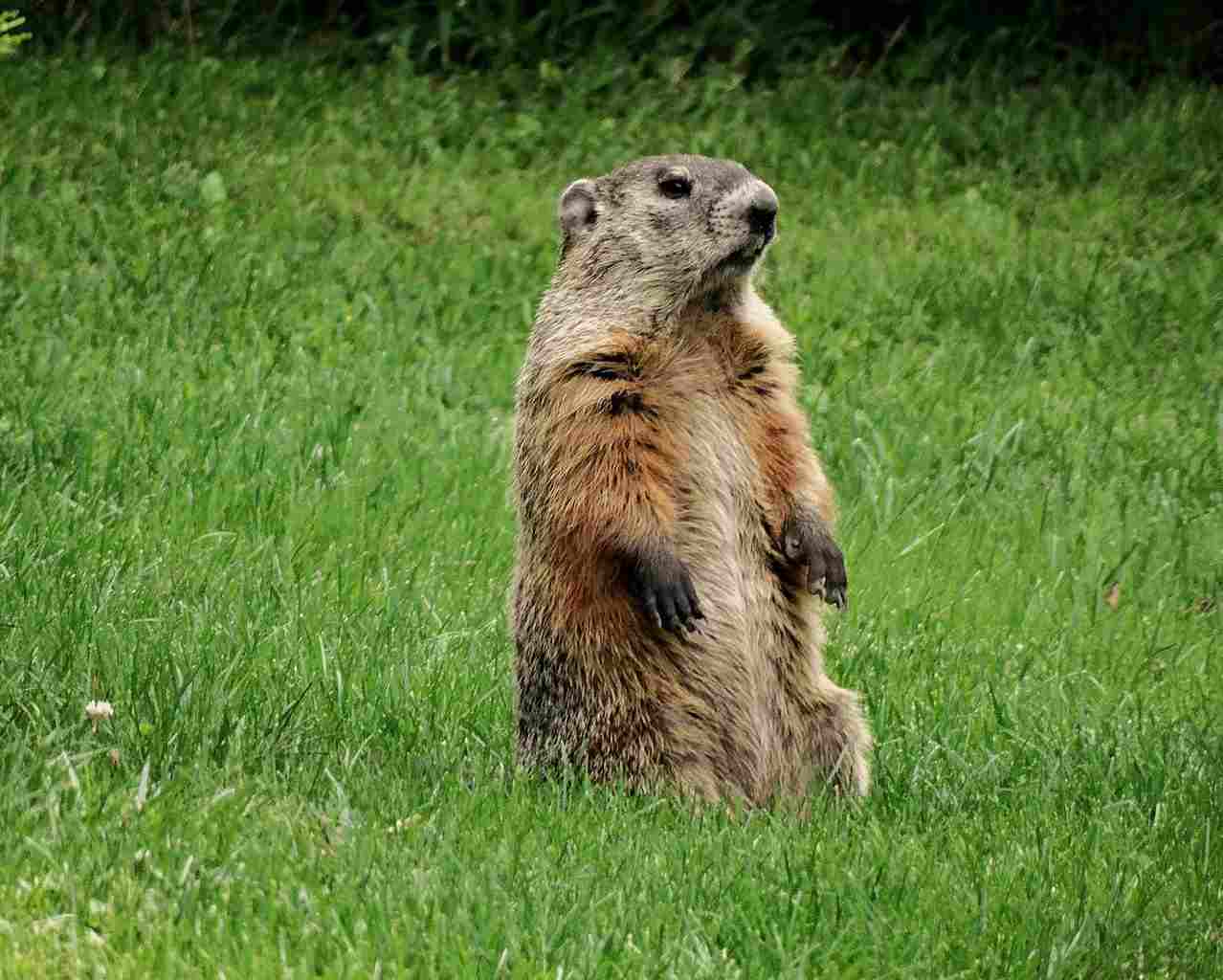
Groundhog:
Well-developed senses of smell and hearing, crucial for detecting predators.
Limited eyesight.
Marmot:
Keen sense of smell and hearing, vital for predator detection.
Eyesight varies among species, generally adapted to their specific habitats.
Comparison:
Both groundhogs and marmots rely on heightened senses of smell and hearing, with variable eyesight adaptations.
Ecological Implications:
Acute senses contribute to their survival by detecting predators and locating food sources in their environments.
11. Overall Physical Capacity:
Groundhog:
Well-adapted for digging with strong forelimbs and claws.
Efficient at climbing trees or structures.
Marmot:
Strong digging capabilities and adept climbers, especially in rocky terrains.
Comparison:
Both groundhogs and marmots exhibit robust physical capacities for burrow construction and habitat navigation.
Ecological Implications:
Physical abilities contribute to shaping their habitats through burrow construction and influence community dynamics.
12. Habitat Preference(s) and Geographic Region:
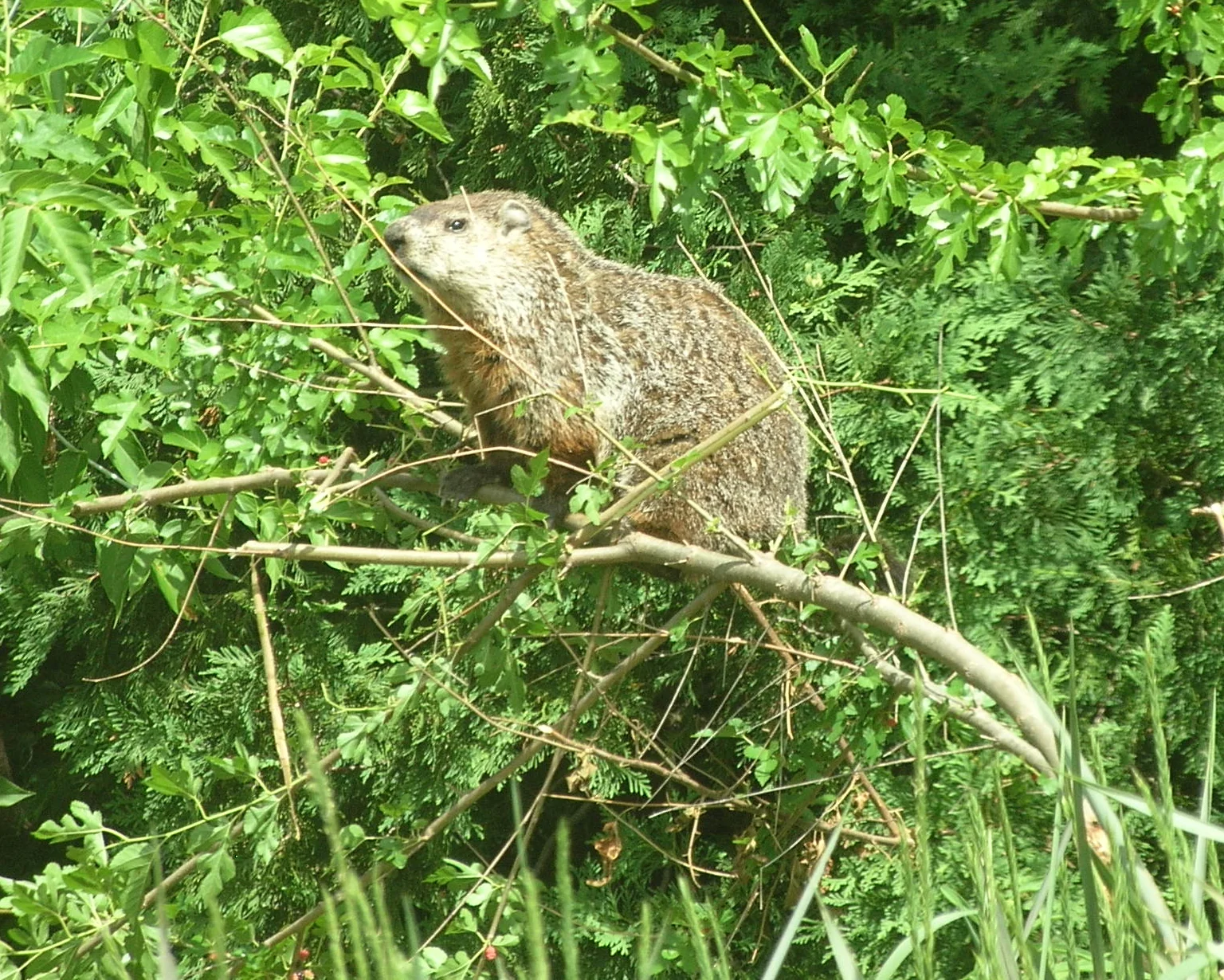
Groundhog:
Prefers open grasslands, meadows, and agricultural areas.
Common in North America.
Marmot:
Diverse habitats including alpine meadows, rocky slopes, and grasslands.
Global distribution with species found in North America, Europe, and Asia.
Comparison:
While groundhogs favor more open areas, marmots exhibit a broader range of habitat preferences.
Ecological Implications:
Habitat preferences impact vegetation dynamics and biodiversity in their respective regions.
13. Tracks:
Groundhog:
Distinctive tracks with claw marks and a pattern reflecting their waddling gait.
Marmot:
Variable tracks depending on species, often showing claw marks and a distinctive pattern.
Comparison:
Both groundhog and marmot tracks display similar features, reflecting their rodent anatomy.
Ecological Implications:
Tracking studies contribute to understanding their movement patterns and habitat utilization for conservation efforts.
14. Lifespan:
Groundhog:
Typically lives 2 to 5 years in the wild.
Marmot:
Lifespan varies by species but generally ranges from 5 to 15 years.
Comparison:
Marmots tend to have a longer lifespan compared to groundhogs.
Ecological Implications:
Lifespan influences population dynamics, reproductive strategies, and overall ecological roles within their ecosystems.
15. Mode of Feeding:
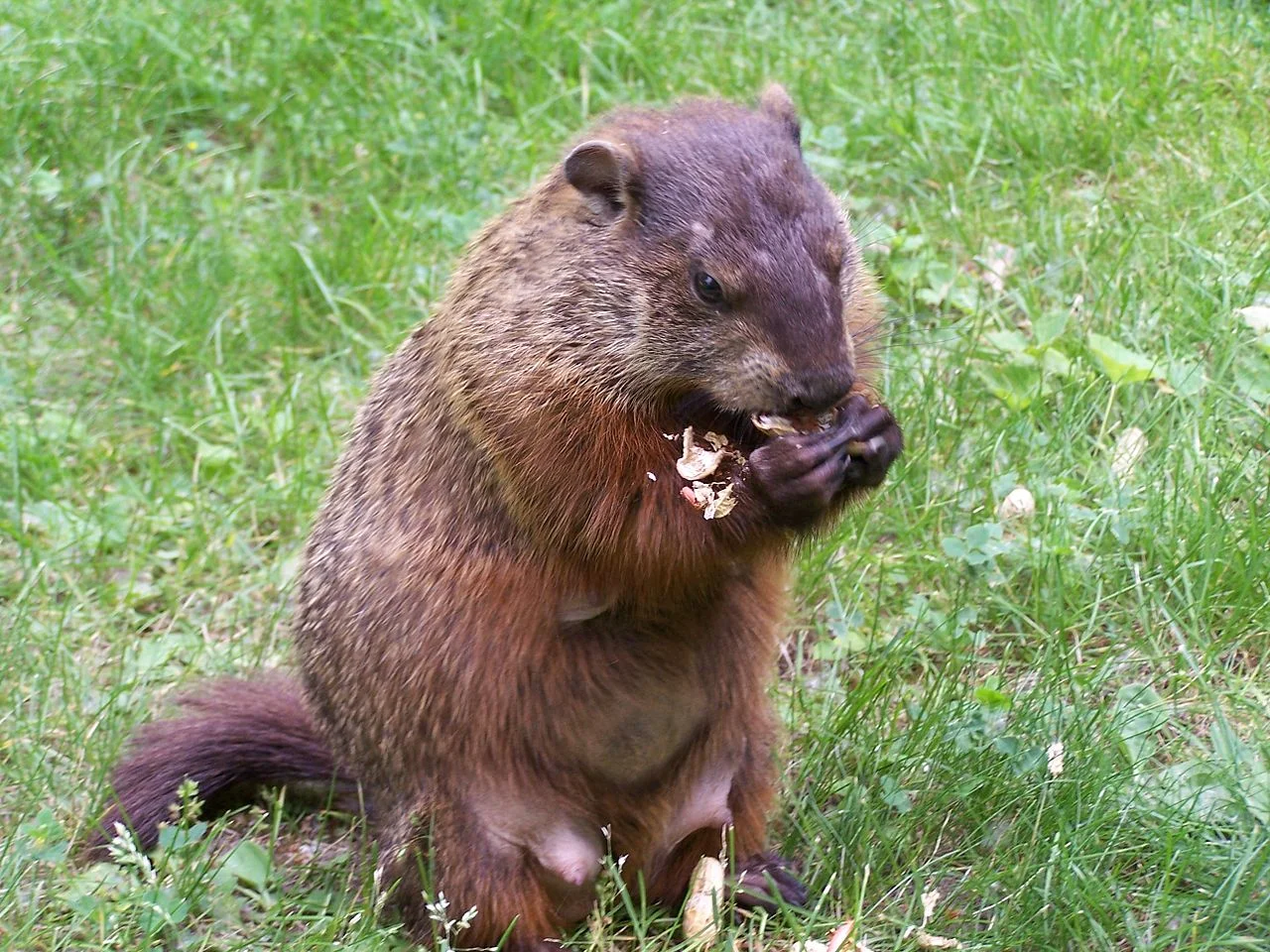
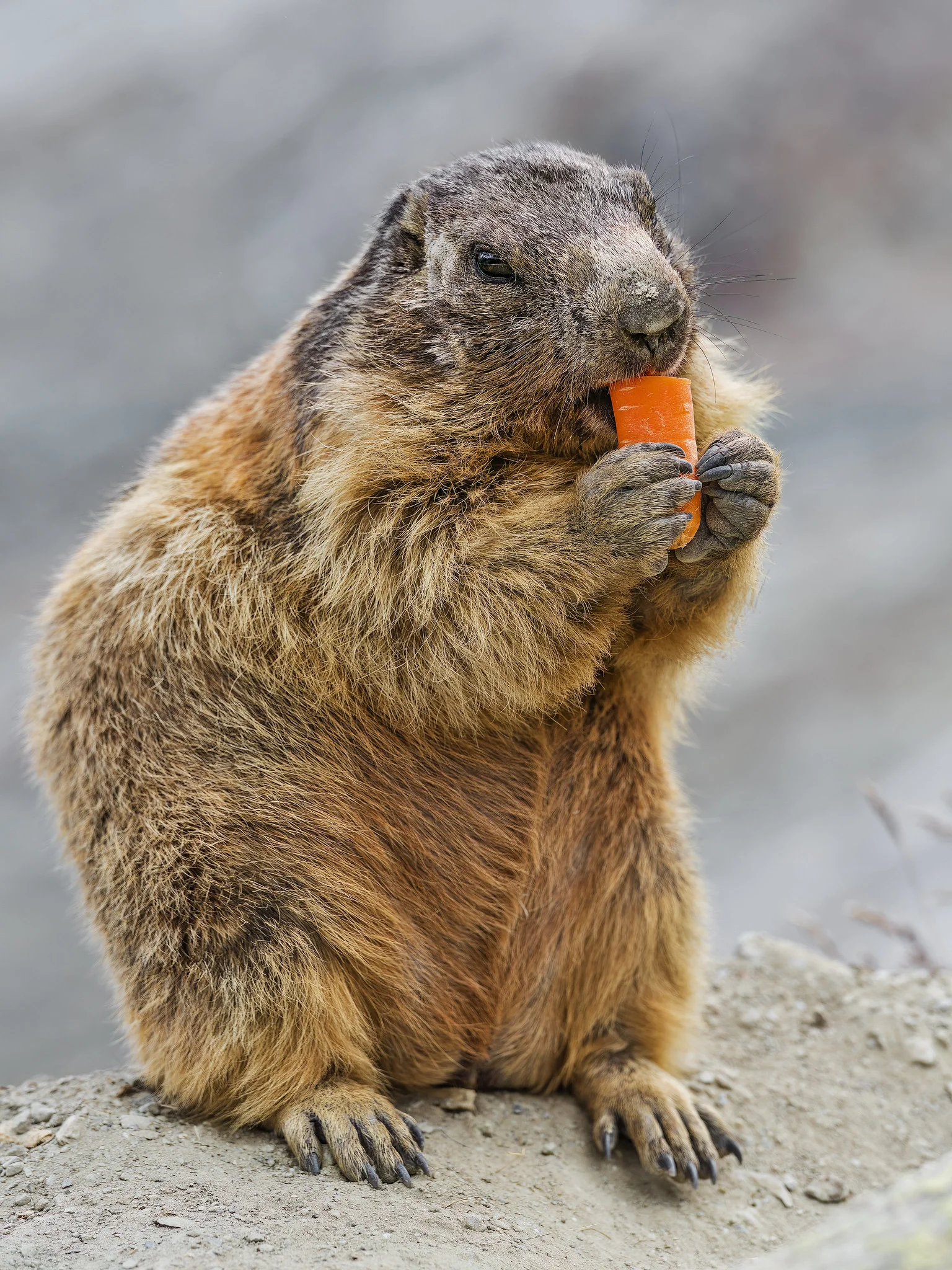
Groundhog:
Herbivorous diet, primarily consuming vegetation such as grasses, clover, and fruits.
Marmot:
Herbivorous, with a diet consisting of grasses, herbs, and occasionally insects.
Comparison:
Both groundhogs and marmots share a herbivorous mode of feeding.
Ecological Implications:
Herbivorous diets impact vegetation structure and contribute to shaping plant communities in their habitats.
16. Intelligence:
Groundhog:
Display moderate intelligence, with problem-solving abilities related to foraging and burrow construction.
Marmot:
Varying intelligence levels among species, generally displaying adaptability to their environments.
Comparison:
Intelligence levels are moderately comparable, with variations among different marmot species.
Ecological Implications:
Cognitive abilities influence resource utilization, adaptation to changing environments, and interactions with other species.
17. Social Behavior:
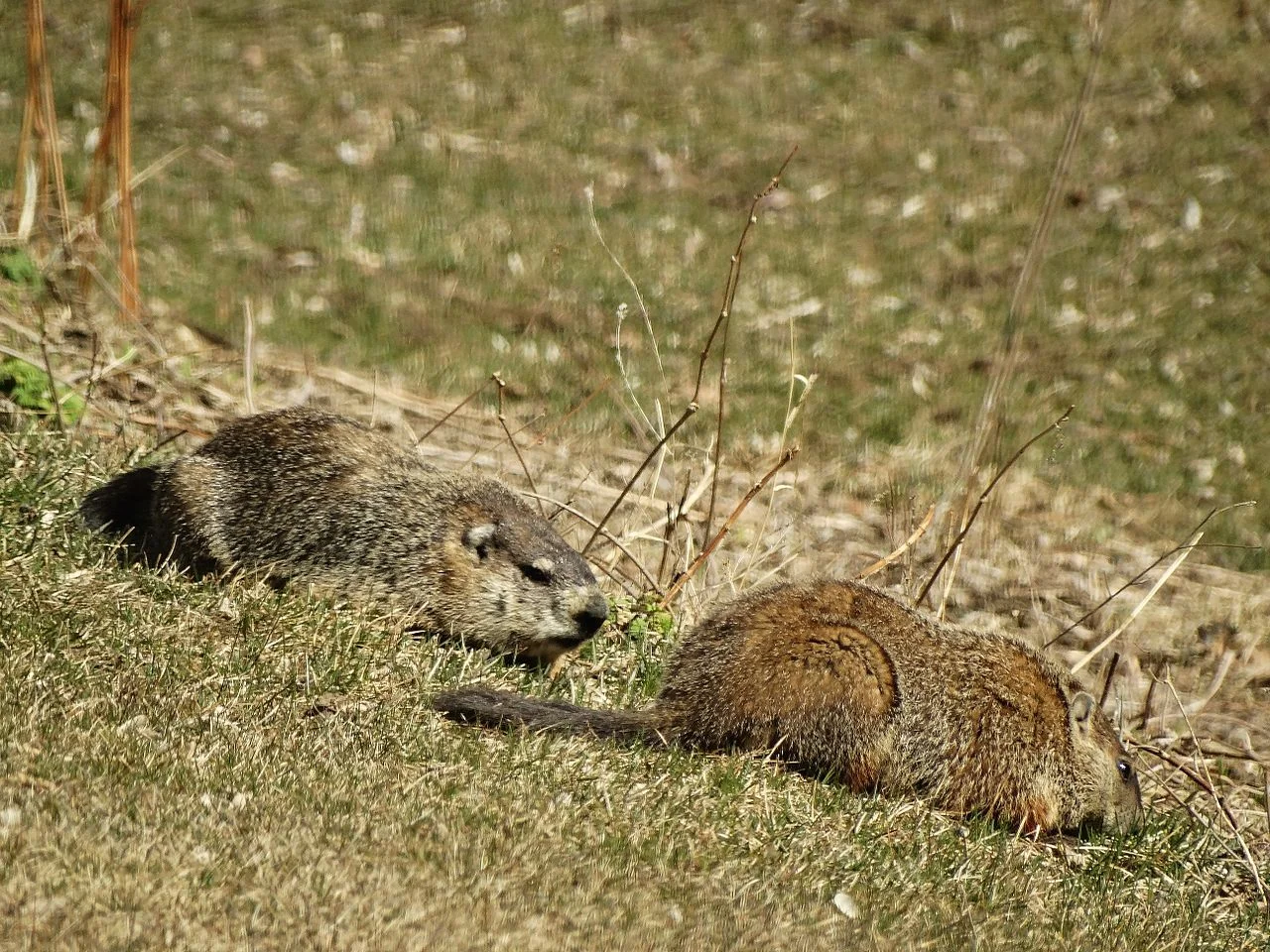
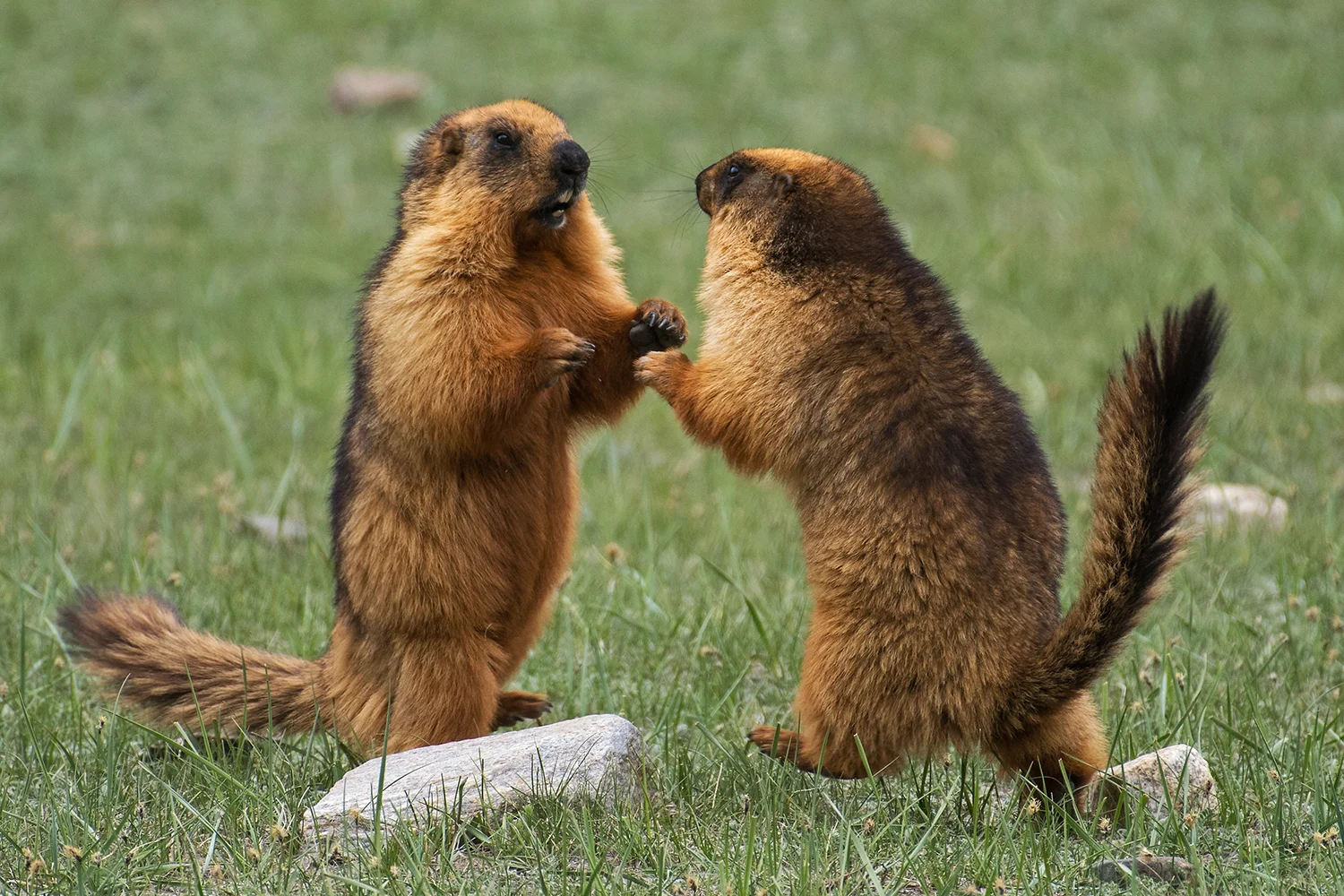
Groundhog:
Generally solitary, with limited social interactions.
Aggressive behaviors can occur during the breeding season.
Marmot:
Varies by species, some are social and live in colonies, while others are more solitary.
Comparison:
Social behaviors range among marmot species, whereas groundhogs are typically more solitary.
Ecological Implications:
Social dynamics impact population structures, habitat modification, and resource competition within their ecosystems.
18. Mode of Reproduction:
Groundhog:
Polygynous mating system, with a dominant male mating with multiple females.
Breeding season typically occurs in early spring, and gestation lasts about 31-32 days.
Marmot:
Reproductive strategies vary by species, with some exhibiting monogamous pair bonding and others being polygynous.
Breeding season varies among species, and gestation lasts around 25 to 35 days.
Comparison:
Both groundhogs and marmots exhibit variations in their modes of reproduction.
Ecological Implications:
Reproductive strategies influence population dynamics and genetic diversity in their respective habitats.
19. Parental Behavior:
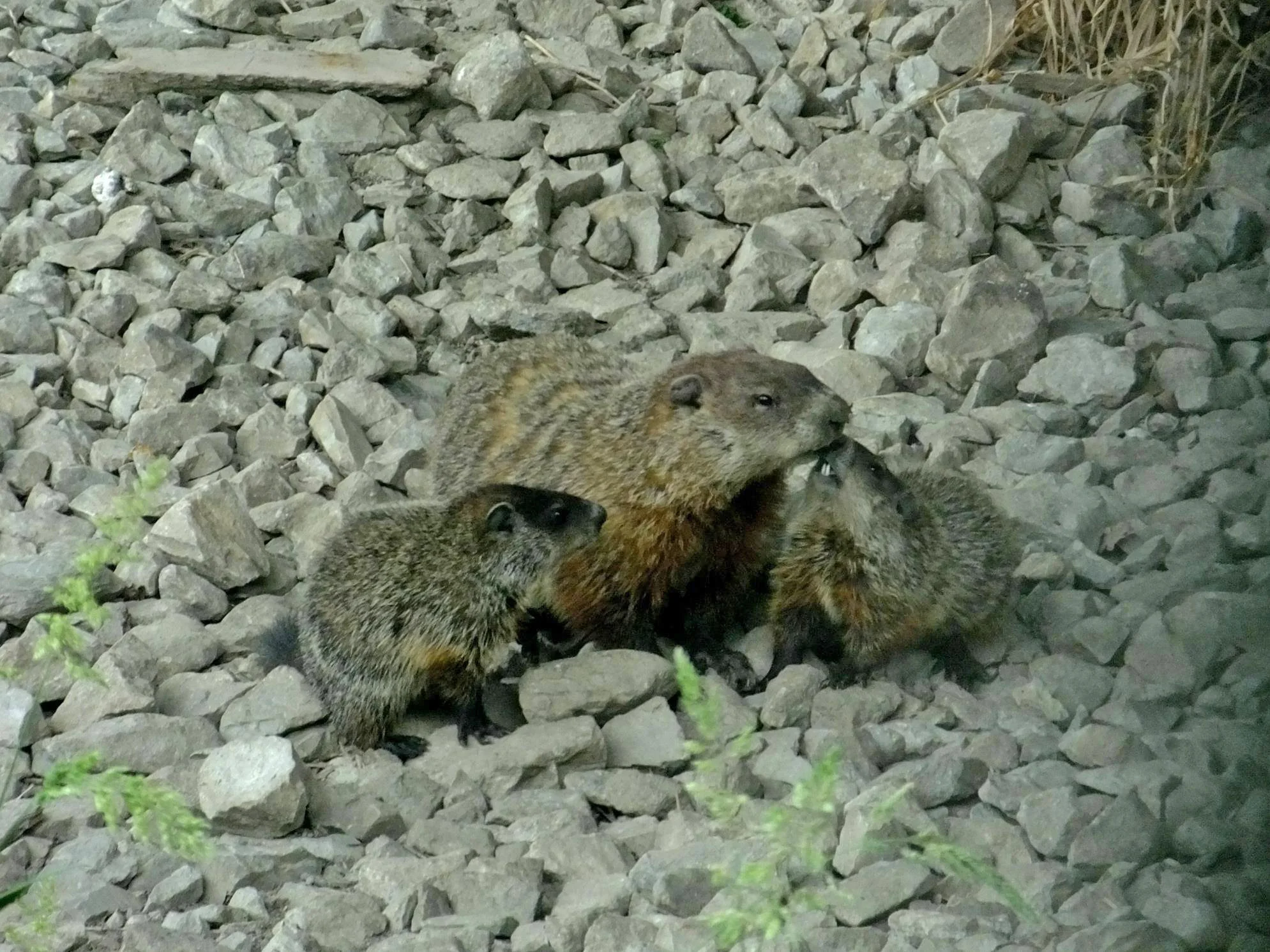
Groundhog:
Limited parental care; mothers care for and protect their offspring until weaning.
Marmot:
Variable parental care, with some species displaying more extensive care, including grooming and protection.
Comparison:
Parental behaviors differ among marmot species, while groundhogs generally provide basic care.
Ecological Implications:
Parental care contributes to the survival and development of offspring, impacting population stability.
20. Proximity to Human-Inhabited Areas:
Groundhog:
Commonly found near human settlements, often digging burrows in suburban areas.
Marmot:
Varied, depending on the species. Some marmots inhabit remote alpine regions, while others may be found in proximity to human activities.
Comparison:
Groundhogs are more likely to be found in close proximity to human-inhabited areas compared to certain marmot species.
Ecological Implications:
Proximity to human settlements can lead to interactions and potential conflicts, influencing both the rodents and local communities.
21. Behavior Toward Humans:
Groundhog:
Generally wary but may become accustomed to human presence, especially in urban areas.
Marmot:
Responses vary; some species may be more elusive, while others may exhibit curiosity or tolerance towards humans.
Comparison:
Both groundhogs and marmots can exhibit varying behaviors in response to human presence.
Ecological Implications:
Interactions with humans may impact the rodents’ behavior, habitat use, and overall ecological roles in the environment.
22. Danger Posed to Humans:
Groundhog:
Typically pose minimal danger to humans; bites may occur if cornered or threatened.
Marmot:
Generally not considered dangerous to humans, but caution is advised due to their wild nature.
Comparison:
Both groundhogs and marmots are not inherently dangerous to humans, with potential for bites if provoked.
Ecological Implications:
Limited danger to humans contributes to coexistence, but interactions should be approached with caution to avoid disturbance.
23. Associated Precautions:
Groundhog:
Caution should be exercised to avoid provoking or cornering them, reducing the risk of bites.
Marmot:
Similar precautions apply, especially in regions where some marmot species may exhibit territorial behavior.
Comparison:
General precautions for avoiding bites apply to both groundhogs and marmots.
Ecological Implications:
Human awareness and responsible behavior contribute to minimizing disturbances in natural habitats.
24. Conservation Status:
Groundhog:
Not considered a species of conservation concern; populations are generally stable.
Marmot:
Conservation status varies by species; some face threats and may be listed as near-threatened or endangered.
Comparison:
Conservation statuses differ among marmot species, while groundhogs are generally more stable.
Ecological Implications:
Varied conservation statuses highlight the importance of species-specific conservation efforts and habitat preservation.
*Summary of Comparison
Taxonomy:
Groundhog: M. monax (Sciuridae)
Marmot: Genus Marmota (multiple species within Sciuridae)
Appearance:
Both exhibit a stout build with bushy tails, but fur color varies.
Size:
Groundhog: 16-26 inches
Marmot: 16-32 inches (species-dependent)
Weight:
Groundhog: 4-9 pounds
Marmot: 4-11 pounds (species-dependent)
Dentition:
Herbivorous dentition with sharp incisors for both.
Physical Offensive Advantages:
Both possess sharp claws and incisors for digging and foraging.
Physical Defensive Advantages:
Rely on burrows for protection, with groundhogs displaying tree climbing.
Speed:
Both run at approximately 8-10 miles per hour.
Agility:
Moderate agility in both, with marmots potentially more adept climbers.
Senses:
Reliance on heightened smell and hearing, with variable eyesight.
Overall Physical Capacity:
Strong digging capabilities for burrow construction and climbing.
Habitat Preference and Geographic Region:
Groundhogs favor open areas, while marmots occupy diverse habitats globally.
Tracks:
Both leave distinctive tracks with claw marks.
Lifespan:
Groundhog: 2-5 years
Marmot: 5-15 years (species-dependent)
Mode of Feeding:
Herbivorous diet, consuming grasses and vegetation.
Intelligence:
Moderate intelligence levels, displaying adaptability.
Social Behavior:
Groundhogs are generally solitary, while marmots exhibit varied social structures.
Mode of Reproduction:
Both species show variations, including polygynous and monogamous strategies.
Parental Behavior:
Limited parental care in groundhogs, variable care in marmots.
Proximity to Human-Inhabited Areas:
Groundhogs commonly found in suburban areas, marmots exhibit variability.
Behavior Toward Humans:
Responses vary, with both exhibiting caution or tolerance.
Danger Posed to Humans:
Minimal danger, potential for bites if provoked.
Associated Precautions:
Caution advised to avoid provoking or cornering, reducing bite risk.
Conservation Status:
Groundhogs generally stable; marmots vary with some facing conservation concerns.
Conclusion
I. Similarities:
Groundhogs and marmots share similarities in their rodent anatomy, herbivorous diet, and defensive strategies involving burrows.
II. Differences:
Differences include habitat preferences, social behaviors, reproductive strategies, and conservation statuses, reflecting the diversity within the rodent family Sciuridae.
